GIGABYTE GA-6PXSV3 Review
by Ian Cutress on March 31, 2014 11:59 AM EST- Posted in
- Motherboards
- Gigabyte
- SLI
- CrossFire
- X79
- Enterprise
- C604
GIGABYTE GA-6PXSV3 BIOS
It may seem a little odd, but the server motherboard manufacturers of almost all of the motherboard companies are completely different departments to those in the consumer space. They are usually treated as completely different entities, different design teams, different marketing and different sales tactics. There is little, if any, cross collaboration between what feels like two different companies under the same branding. The main reason for this is the customer. Server customers can have wider ranging requirements and the server sections are more accustomed to building specific products for a particular customer providing the volume is sufficient.
This lack of cross-collaboration, and different priorities, is the reason that server BIOSes are full of options that make almost zero sense to most people but also go back to pre-UEFI days. There is no F12 ‘Screenshot to USB’ option in these BIOSes, so I had to dust off the camera and tripod for the following:
Blue on grey meets white on blue and combinations therein, but at least on the first screen we are told the BIOS version, the build date of the BIOS, the CPU installed, that CPU’s current speed, how much memory is used and the current memory speed. Even when using a server BIOS, I do like to know which motherboard is being used, and this information is not on this page.
As expected with a server motherboard, overclocking is nil and there are no extensive options to adjust values. The Advanced page gives the option to adjust the CPU ratio from 1 to 99, even on Xeons, but there is no CPU voltage adjustment option. Moreover if this setting is put above the ratio for an non-overclockable CPU, it is ignored.
The Intel NICs have their own menus regarding status and MAC addresses:
Fan controls in the BIOS are basic at best with a couple of default settings:
The CPU Power Configuration screen gives options for C-States, turbo mode and core ratios for loading:
Memory configuration is in the North Bridge menu under the Chipset tab, although there is no opportunity to adjust the subtimings:
One good thing about the BIOS is that each of the options has a small help screen in the top right. For further information the manual also goes through each setting. On this screen the DDR Speed is important for users of the faster 1866 kits, especially if paired with a Core i7 CPU.
Server management has its own screen, with an OS watchdog timer and details regarding the BMC nic via the Aspeed AST2300:
Boot options are in the penultimate menu, and thankfully there is a boot override section in the Save and Exit section.
There is no way to tell if server motherboard manufacturers will implement a graphical BIOS system similar to the consumer lines. Server products are more built for function over usability, but I cannot help but wonder if a server BIOS department went over to the consumer motherboard segment and asked for a mutual collaboration. It could end up increasing the function of the BIOS by helping direct users to functions in a nicer environment.
GIGABYTE GA-6PXSV3 In The Box
Guessing what is in the box of a motherboard is a tricky task. On the one hand, this is an expensive product and should command an interesting selection of internal goodies. But as mentioned on the previous page, a server motherboard is all about function, and other parts might be sourced from other areas. The trade off with supplying parts in the box is that they are guaranteed to work, but they might not be the parts that the consumer desires. As it stands, the GA-6PXSV3 has the following:
Driver CD
Manual
Rear IO Panel
Four SATA Cables
This would be a poor showing in a consumer line product, where value for money is an important factor. It should probably matter less in the server space.



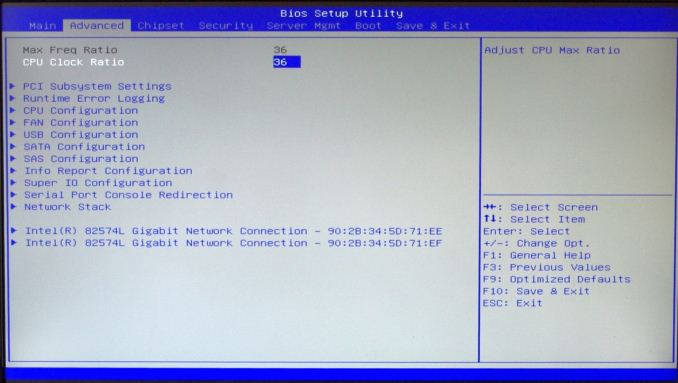
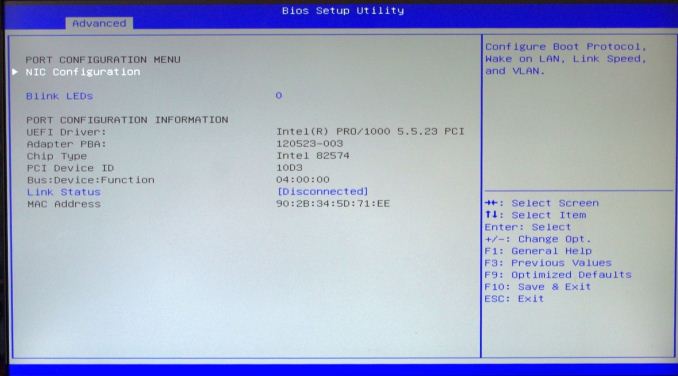
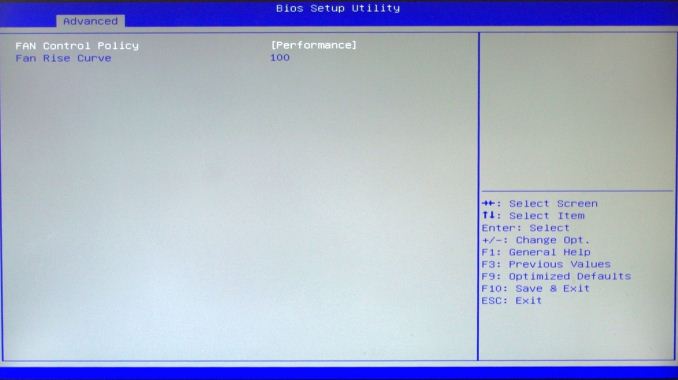
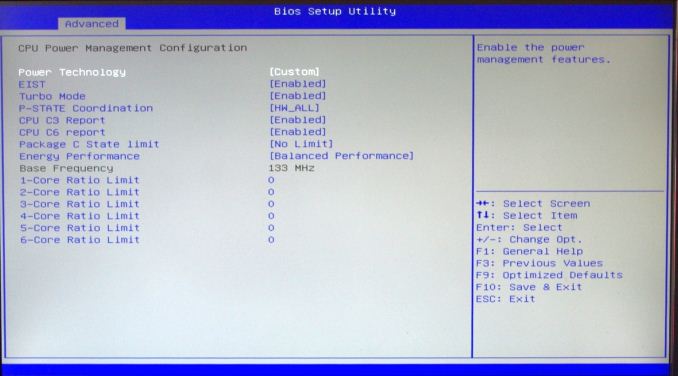
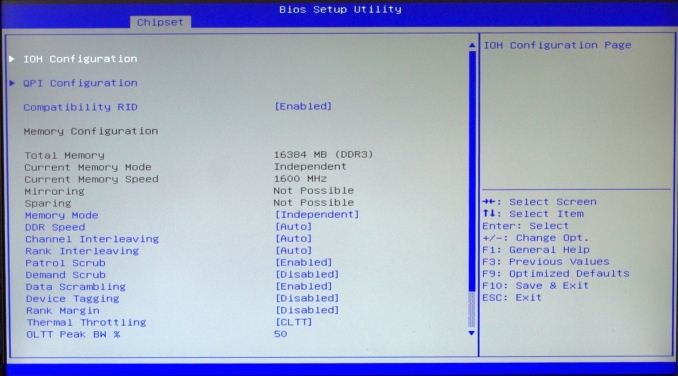
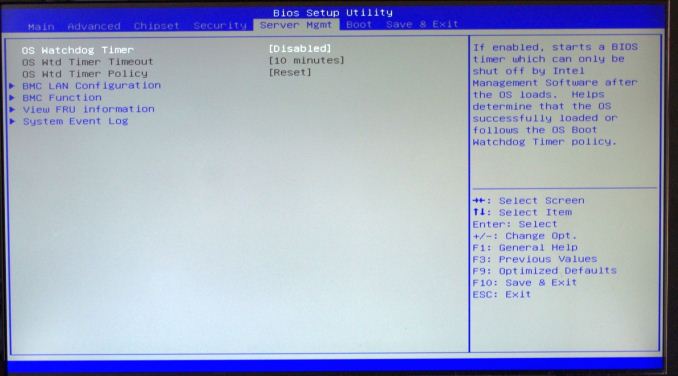
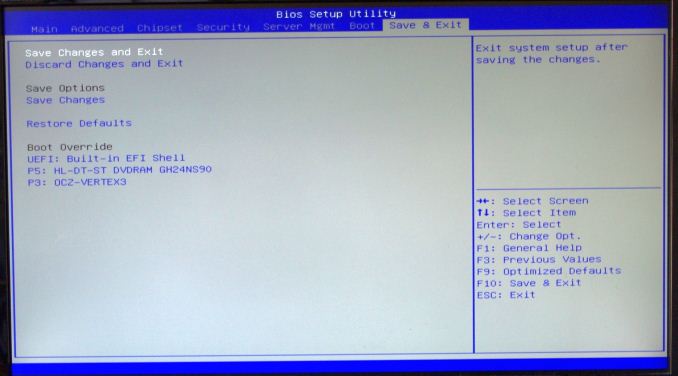














12 Comments
View All Comments
mooninite - Monday, March 31, 2014 - link
I wouldn't recommend this board since it includes 82574L NICs that have known hardware errata that I have suffered myself. They are also quite old now (3+ years). Any new server board will include I350-based NICs and these seem to be rock solid in my testing.extide - Monday, March 31, 2014 - link
Odd that they left the remaining 8 PCIe lanes un-used. It would have been a better idea to route them to that last PCIe slot, instead of that slot using 2 lanes from the chipset.TeXWiller - Monday, March 31, 2014 - link
Do you have any experience with the i210 series? That seems to be the new value choice after the 82574L.Samus - Monday, March 31, 2014 - link
its funny you mention that, I had HP replace a motherboard in one of my clients Pro 4300 SFF workstations and the new board had an i210, the old board had a Broadcom, so it seems people are moving toward the i210 on the newest hardware revisions.mooninite - Tuesday, April 1, 2014 - link
i210 would be fine. Anything except 82574L...Ktracho - Monday, March 31, 2014 - link
Any chance of getting a screen shot of the BIOS screen for Advanced/PCI Subsystem Settings? We are very interested in a motherboard that supports the latest NVIDIA Tesla / Xeon Phi boards (which the GA-7PESH3 motherboard support), but we have not been able to find specific information about this Gigabyte motherboard. The key would be for the BIOS screen to have a setting for "PCI 64bit Resources Handling"/"Above 4G Decoding". Can you confirm if this setting exists for the GA-6PXSV3? ASUS has a competing motherboard with a similar setting in the BIOS, but it does not meet our requirements.Ian Cutress - Monday, March 31, 2014 - link
It's in the gallery, third picture along.http://www.anandtech.com/Gallery/Album/3508#3
yuhong - Tuesday, April 1, 2014 - link
"The GIGABYTE BIOS may not be UEFI"It is UEFI, notice the UEFI shell item.
BMNify - Tuesday, April 1, 2014 - link
"GIGABYTE Server GA-6PXSV3 we are reviewing today is aiming to supply enough at the lower end of the extreme workstation segment."its hard to pick the April fool news as this cant be considered "the lower end of the extreme workstation segment." at 349€95 http://www.ldlc.com/fiche/PB00140021.html surely, with only a single socket and not enough PCI-E slots to fill with a reasonable amount of fast PCI-E SSD's plus gfx cards....
toyotabedzrock - Tuesday, April 1, 2014 - link
I had a workstation board by supermicro in the slot 1 era of P2 and P3 and it's bios was very graphical and used a mouse. I don't understand why the bios interface went from that to an 80s era design and stayed there.